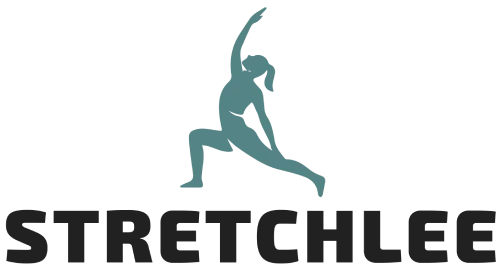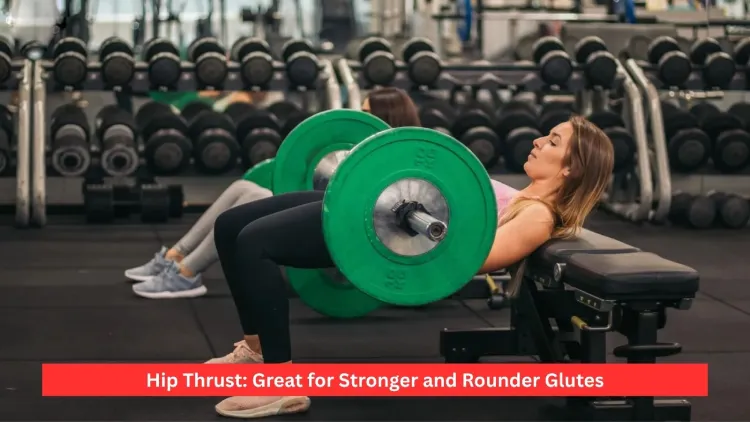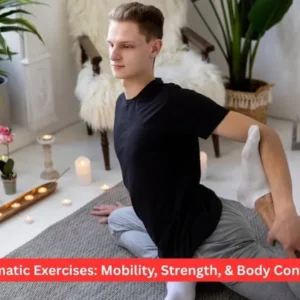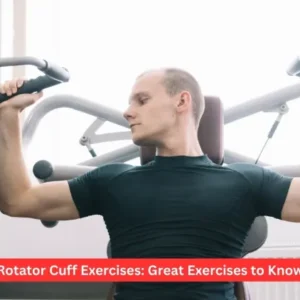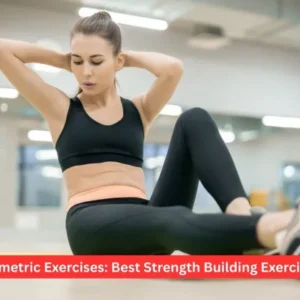Hip Thrust is rated to be among the best exercises to strengthen, round and raise glutes. It is incredibly popular as compared to the conventional leg exercises in that it improves glute action and has physically appealing outcomes. Whether you are a professional or amateur sportsperson, are trying to build or tighten up your lower body or just trying to sculpt your butt, hip thrust will give you a strong butt, boost sports performance, better postural muscles, less lower back tension and perfect lower body balance, all the while giving you the confidence of a more flattened, well-toned physique.
- What is a Hip Thrust?
- Muscles Worked by Hip Thrust
- The Step-by-Step Guide on How to Do Hip Thrusts
- Advantages of Hip Thrust Exercise
- Common Mistakes to Avoid
- Hip Thrust Variations
- To achieve the best training results, you need to use these tips
- Which People should Incorporate Hip Thrusts in the Workout?
- Conclusion
- Frequently Asked Questions
What is a Hip Thrust?
Hip Thrust is a lower-body strength workout that mostly targets the gluteal muscles. It is done through elevating of hips out of a sitting or lying posture with the back of the upper body resting on a bench or platform. This exercise mainly involves the extension of the hips, which is one of the major roles of the gluteus maximus, and most often it is performed with a barbell across the hips.
Hip thrusts are a glute-based movement and are one of the best movements to activate the glutes as compared to other compound lower-body movements. This is why they are the exercise that people, or women in particular, prefer as they want to build up an ass that is rounder, stronger, yet without excessively growing leg muscles such as the quadriceps. Hip thrusts place the glutes in the centre spot, as opposed to squats, which evenly distribute the load between various muscle groups. Other hip thrusts are a way to give your booty an incredible shot of growth with some not-so-insignificant functional benefits.

Muscles Worked by Hip Thrust
Although the exercise Hip Thrust is a glute-dominant one, it engages a variety of muscles in your lower body and midsection:
- Gluteus Maximus: This is the prime mover during the hip thrusts and involves the extension of the hips.
- Gluteus Medius and Minimus: Stabilise the hips and promote all lateral movement.
- Hamstrings: These are to be used to aid in hip extension.
- Erector Spinae and Core: Relief to assist in move of the pelvis and spine.
Such muscle coordination not only enhances the appearance but also the functional posture, injury avoidance and sports.
The Step-by-Step Guide on How to Do Hip Thrusts
Be you are a beginner or an advanced lifter, the essential component of glute training is to master all the correct form.
Setup
Sit on the floor with your upper back against a bench or a platform. Roll a padded barbell over your hips (failing which, beginners use body weight).
Foot Position
Keep your feet flat against the ground with a shoulder spacing. On reaching the top of the movement, your knees are supposed to bend at approximately 90 degrees.
Body Alignment
Tuck your chin slightly, brace yourself, and privacy your ribs to ensure you do not arch your lower back.
Lift
Kick backwards with your heels and strain your hips up to the ceiling. The shoulder blades are to be in contact with the bench.
Squeeze and Control
Stand with the hips on top, squeeze your buttocks, and hold for 12 seconds. Repeat and down with control, lower back.
Correct form is not only the most effective way to gain the maximum amount of muscle, but the least harmful to the body, especially the back and hips.

Advantages of Hip Thrust Exercise
1. Increased Glutaral strength and shape
The Hip Thrust is the leading in the glute activation process. It has also been shown to outperform other exercises by a significant margin, even squats, in terms of glute involvement. That is why it is an indispensable component for every person who wants to create round, plump, and firm buttocks.
This workout is exceptionally good in terms of women trying to get the desired peach shape. Hip thrusts can be used, unlike other traditional leg exercises that make the quads grow along with the glutes; thus, they give the opportunity to achieve growth and development in the glutes without increasing the size of the thighs.
2. Increased Sports Performance
Faster sprints, jumping higher and making more explosive moves all make a stronger glute. This creates the Hip Thrust to be popular among sports such as soccer, track, and basketball players.
It helps in the extension of the hips, which is one of the most used power movements in most sporting activities. In the case of an athlete, hip thrusts to the training schedule can result in improved performance in the field and reduced vulnerability to injuries.
3. Core Stability and Posture
Since hip thrusts involve holding a position with the pelvis and the spine, they will train the core to remain straight, as your hips hinge. This assists in relieving lower back pain, enhancing body posture and healthy lifestyle patterns.
4. Helps Slim Your Waist and Hips
Although hip thrusts do not directly burn belly fat, it does aid in developing lean muscle tissue in your glutes, which can, in the long run, increase the rate at which fat is burned in your body. They also produce an optical illusion of a smaller waist, as they make the glutes bigger and rounder -they make the proportions of the figures.
Regularly performed, combined with nutrition and cardio, the hip thrusts could aid the weight-loss objectives and tightening of the waistline. They do not increase the hip bones, and may increase the exterior glutes to make the hips seem wider and the lower body more contoured.
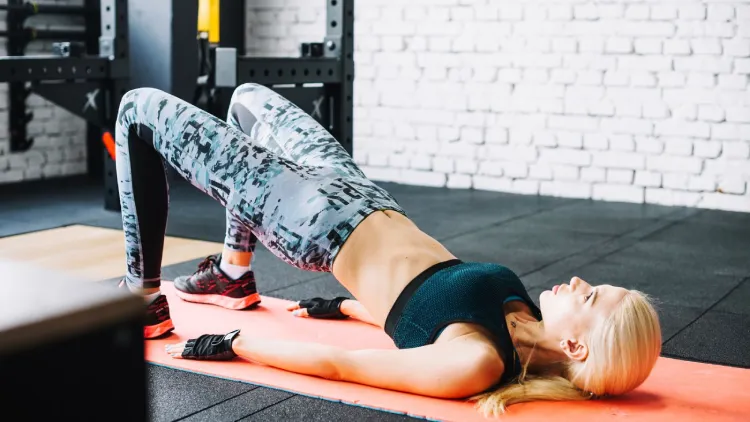
Common Mistakes to Avoid
Although the Hip Thrust is comparatively easy to perform, failure to perform it properly may diminish its efficacy or may even result in a higher chance of injury.
- Arching of the lower back: This is a strain to the spine instead of the glutes.
- Excessive or insufficient placement of feet: improper placement of feet decreases the involvement of the glute.
- Failure to reach a full hip extension: The failure to complete reps results in sub-optimal gains.
- Excessive weight too early: Form is destroyed when ego lifting comes into play.
- Allowing the knees to sink in: This breaks off the glutes and encourages the knees to further strain.
Good form holds the key as it guarantees complete glute function and makes you achieve quicker outcomes.
Hip Thrust Variations
- Bodyweight Hip Thrust: Perfect to start with, whose concern is form and activation.
- Barbell Hip Thrust: The best and most common when it comes to progressive overloading.
- Single-Leg Hip Thrust: Works on the imbalances of the glute and hamstring and enhances unilateral strength.
- Resistance Band Hip Thrust: Good as a source of unremitting tension, particularly at the apex of the movement.
- Smith Machine Hip Thrust: Provides stability and enables you to exert greater weight as well as concentrate on contraction.
Select variation according to your aspirations, accessibility of equipment and training level. Weighted thrusts can be performed by beginners who have progressed to them by using body weight or band-weighted thrusts before graduating to the weighted ones.

To achieve the best training results, you need to use these tips
A hip thrust workout can be maximised in the following way:
- Frequency: 2 to 3 times per week is the recommended amount that helps in muscle growth.
- Reps and Sets: In the case of hypertrophy, the desired reps are 8-12 reps in 3-5 sets. Strength: 450, heavier loads of 46 reps are best.
- Progressive Overload: the difficulty of the glutes is progressively brought upon by adding resistance or adding extra repetitions.
- Load Recommendations: Beginners can start with 2030kg (or any bodyweight) only. The weight of one hip that is thrust by an experienced woman is 1.5-2 times her body weight.
- Time Under Tension: Have patience and squeeze on the top during 1 to 2 seconds so as to optimise the glute contraction.
Other splits livers subscribe to techniques such as the 888 rule – 8 reps, 8 seconds of rest per set – to increase glute pump and incinerate fat.
Which People should Incorporate Hip Thrusts in the Workout?
- Any person with weak or inactive glutes.
- Lack of exercise has caused many individuals to have sleepy glutes. Hip thrusts are used to reawaken these muscles that are not working hard.
- Women and men who intend to tighten or build the buttocks.
- This move will specifically provide desired outcomes to people who are unhappy about the size or shape of their butt.
- Athletes who focus on the lower body strength and power.
- Well-developed glutes produce good sprinters, jumpers and lifters.
- Patients with needless back or knee pain.
Strong glutes help in maintaining the posture of the body and lessen the weight on the joints.
Hip exercises like the hip thrust can be applied even in older people, whose glutes hold many of the answers to balance, mobility, and independence in old age.

Conclusion
The Hip Thrust is undoubtedly among the most effective glute exercises that you can do, regardless of your purpose; be it strength, sporting performance and a more shredded body figure. It is user-friendly, very useful, and it can be adjusted to whatever training level one may have. Hip thrusts can help to reshape your glutes and enhance your body strength and stability with the help of proper form and consistency.
Frequently Asked Questions
1: What is the time of hip thrust?
The majority of individuals can feel the difference in 6-12 weeks with the help of regularly practised training and progressive overload.
2: Do hip thrusts decrease belly fat?
They do not directly metabolise belly fat but assist in increased muscle bulk and metabolism to lose fat in general.
3: Does that mean I can only build glutes with hip thrusts?
Well, supplementary exercises such as squats and lunges usually produce more balanced outcomes, though.
4: What is the best weight to begin with?
Begin to use the weight of the body or a bar without any weight on it. Increase weight progressively with an increase in strength and confidence.
